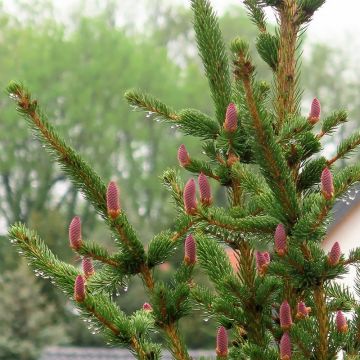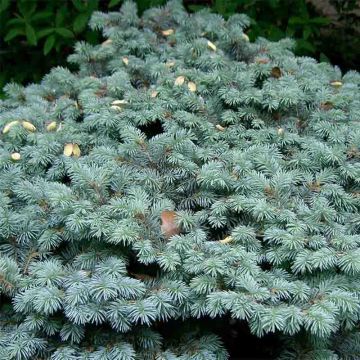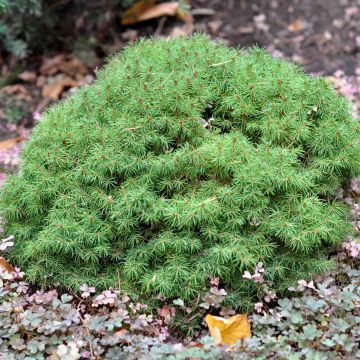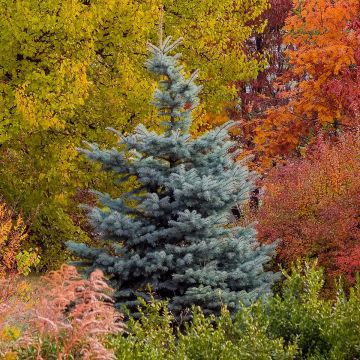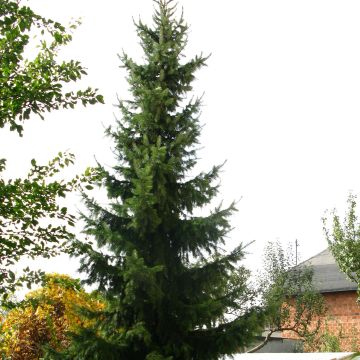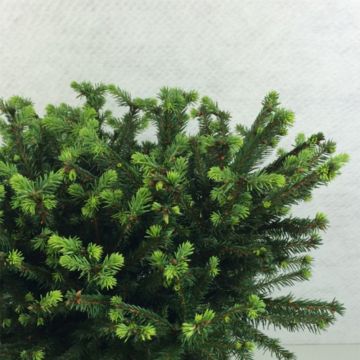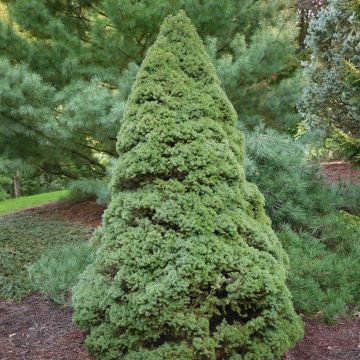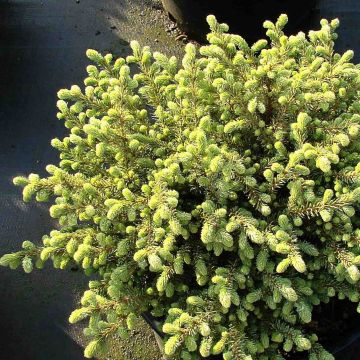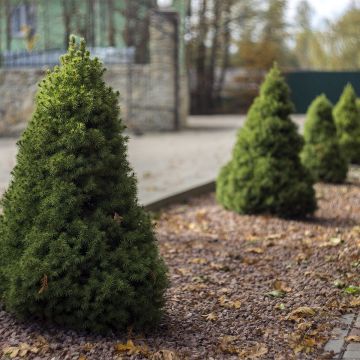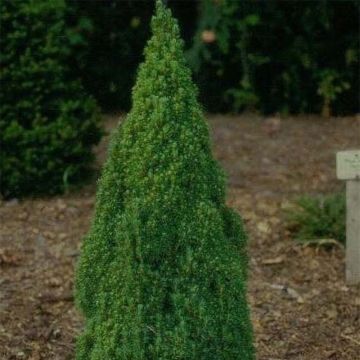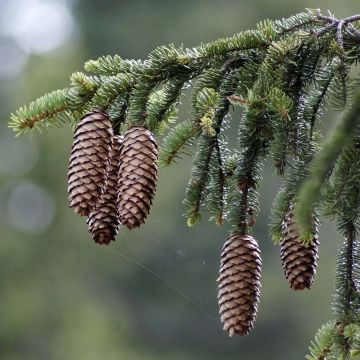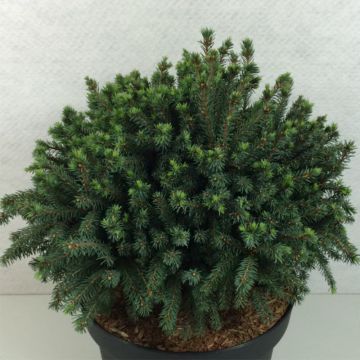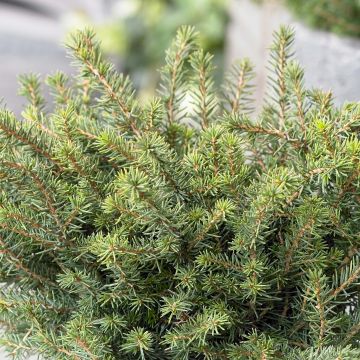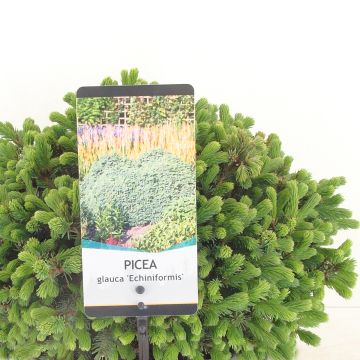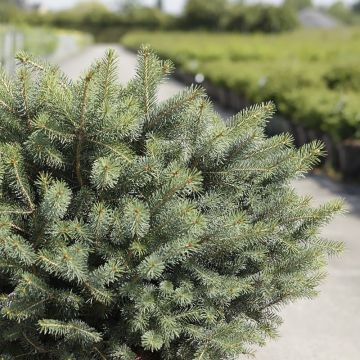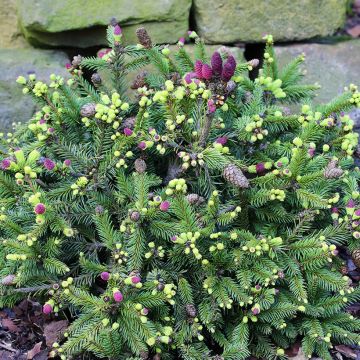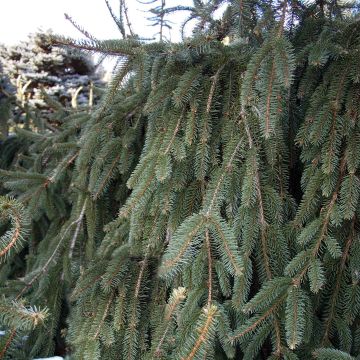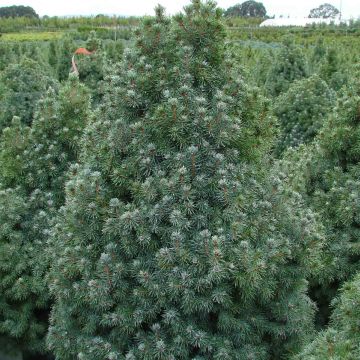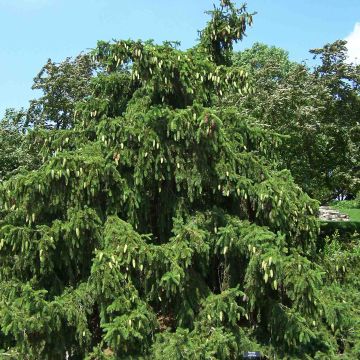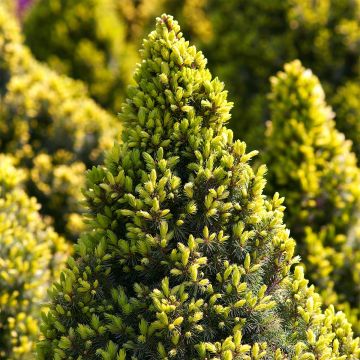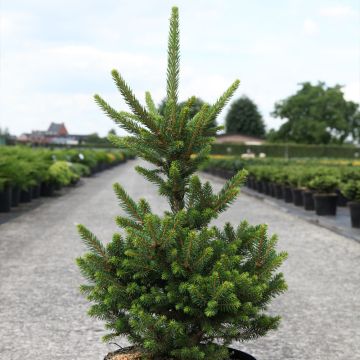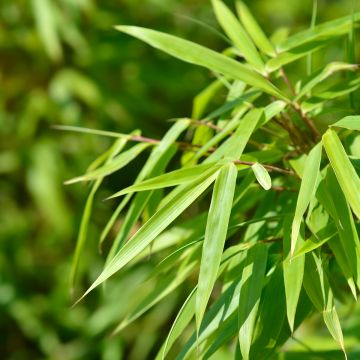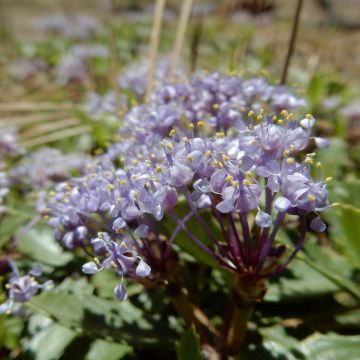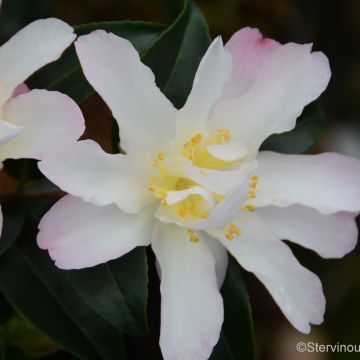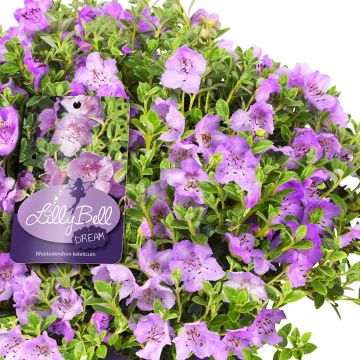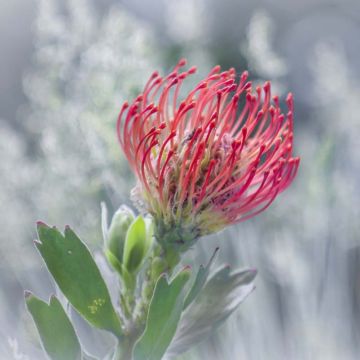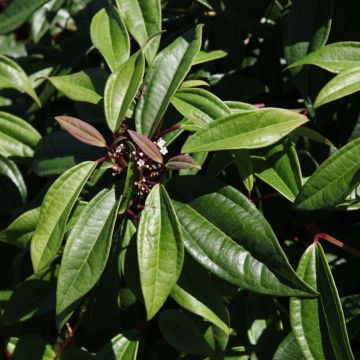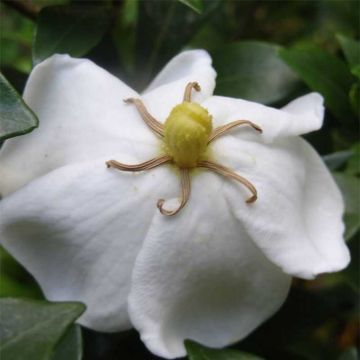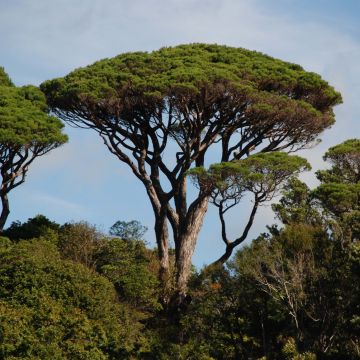Shipping country and language
Your country of residence may be:
Your country of residence is:
For a better user experience on our website, you can select:
Your shipping country:
Andorra
Austria
Belgium
Bulgaria
Canada
Chile
Croatia
Cyprus
Czechia
Denmark
Estonia
Finland
France
Germany
Greece
Hungary
Iceland
Ireland
Italy
Latvia
Lithuania
Luxembourg
Malta
Monaco
Netherlands
Poland
Portugal
Romania
Slovakia
Slovenia
Spain
Sweden
Switzerland
United Kingdom
We only deliver seed and bulb products to your country. If you add other products to your basket, they cannot be shipped.
Language:
French
German
Spanish
English
My Account
Hello
My wish lists
Plantfit
Log in / Register
Existing customer?
New customer?
Create an account to track your orders, access our customer service and, if you wish, make the most of our upcoming offers.
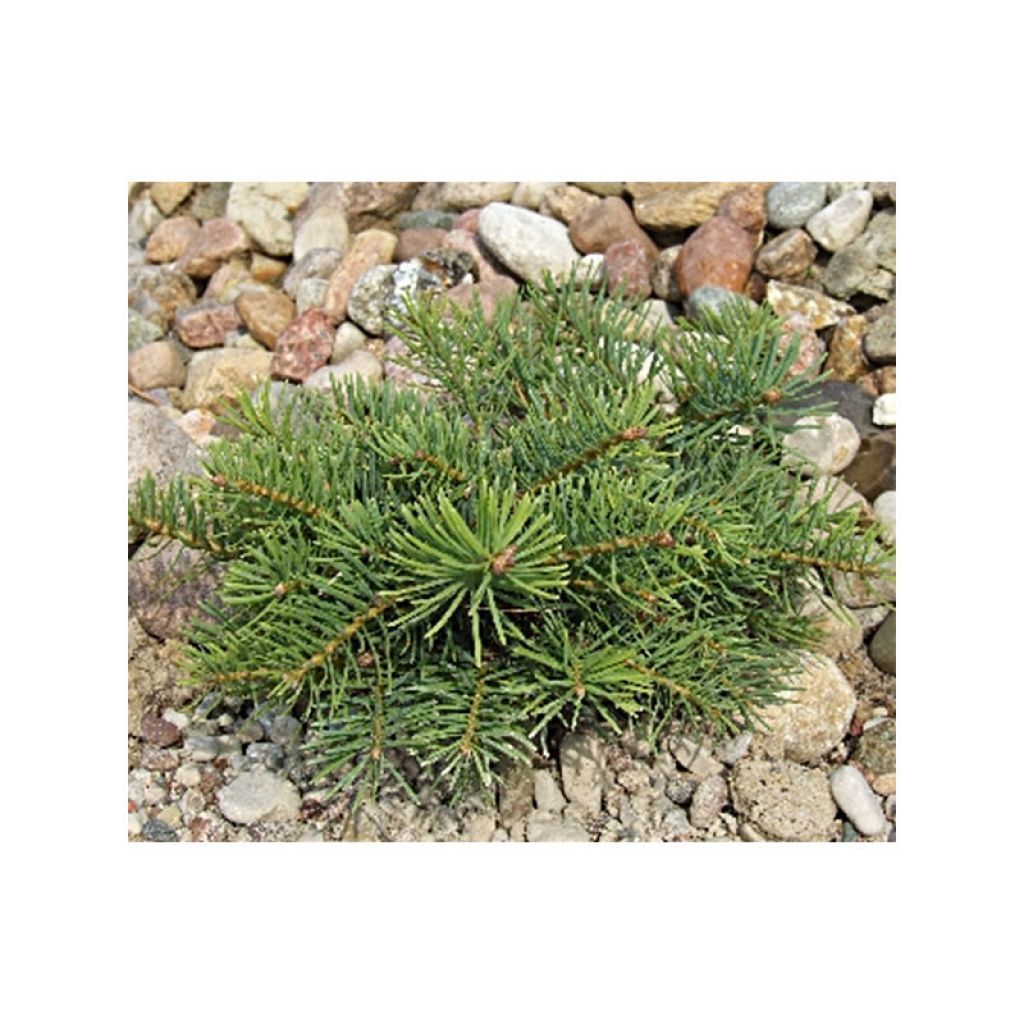

Picea abies Eagle Point - Epicea commun nain
Picea abies Eagle Point - Norway Spruce
Picea abies Eagle Point
Norway Spruce, Common Spruce, European Spruce
Hello, promise of flowers, could there be a mistake with this plant? From the photo, it doesn't look anything like a spruce, but rather like an abies, right? It is quite possible that in the photo, it is an Abies concolor 'Eagle Point'. Don't hesitate to contact me for confirmation.
denis , 26/08/2017
Why not try an alternative variety in stock?
View all →Order in the next for dispatch today!
Dispatch by letter from €3.90.
Delivery charge from €5.90 Oversize package delivery charge from €6.90.
More information
This item is not available in your country.
Schedule delivery date,
and select date in basket
This plant carries a 24 months recovery warranty
More information
We guarantee the quality of our plants for a full growing cycle, and will replace at our expense any plant that fails to recover under normal climatic and planting conditions.
From €5.90 for pickup delivery and €6.90 for home delivery
Express home delivery from €8.90.
Does this plant fit my garden?
Set up your Plantfit profile →
Description
Picea abies 'Eagle Point' is a dwarf variety of common spruce, resembling a small Christmas tree, both by its slightly flattened pyramidal habit and by its fine and dense foliage, composed of needles with very bright blue reflections. Little widespread, it is highly ornamental with its small rounded silhouette that elegantly integrates into flower beds, stands out when isolated, enlivens rockeries and adapts well to pot cultivation. Slow-growing, it is easy to grow in ordinary, well-drained soil, even dry, in full sun or partial shade.
Picea abies, also called Norway spruce or red spruce, is an evergreen conifer belonging to the pine family, native to northern Europe, more precisely Scandinavia. In its natural environment, it has a typically conical and pyramidal habit and can reach 30m (98ft) in height, or even more in Eastern Europe. This species is traditionally used as a Christmas tree in Europe. It appreciates well-drained and moist soils and is not afraid of very low temperatures.
The 'Eagle Point' variety, derived from this species, is a dwarf form with a spreading pyramidal habit. After 10 years, it forms a small bush 20cm (8in) tall and 60cm (24in) wide. Its growth is very slow. Eventually, it will reach 50cm (20in) in height and 80cm (32in) to 1m (3ft) in diameter. It has very tight, staggered branches. Its young spring shoots are tender and bright green, then its foliage darkens and becomes a very bluish green. Its small evergreen leaves are rigid, very prickly needles, densely arranged all around the branches, in 'candle' form. The root system of spruces is shallow and spreading, which makes them difficult to transplant when they are mature and particularly sensitive to wind.
The 'Eagle Point' spruce, with its lovely rounded tufted habit, its very small size, low maintenance, and easy cultivation, is a perfect plant for rockeries and terraces. It goes well with large stones, geometric lines, and masonry works. It can be associated with dwarf columnar or erect conifers. The real graphic qualities of conifers naturally impose themselves in the design of a contemporary garden, which prefers the aesthetics of shapes, silhouettes, and textures to the waltz of blooms. These plants, with their reassuring permanence, structurally and durably shape a flower bed, mark pathways, border terraces, easily substituting for the strong presence of trimmed boxwood or holly. They go well with ground-cover plants like aubrietas, Cerastiums, shrubby salvias, as well as flowering shrubs. The key is to play with volumes and colours.
Picea abies Eagle Point - Norway Spruce in pictures
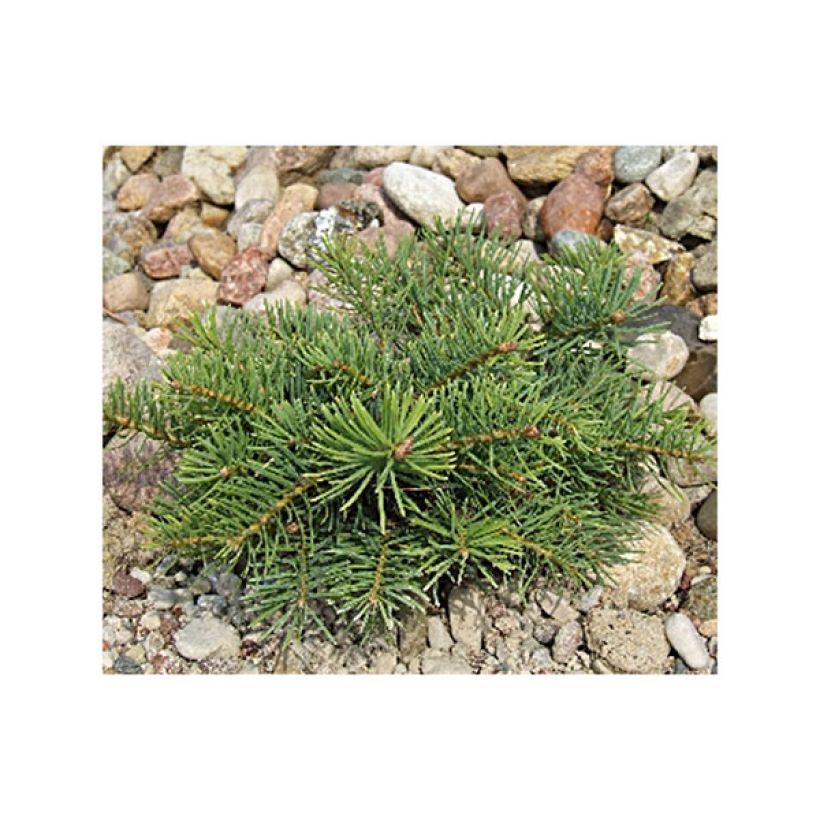

Plant habit
Flowering
Foliage
Botanical data
Picea
abies
Eagle Point
Pinaceae
Norway Spruce, Common Spruce, European Spruce
Cultivar or hybrid
Other Picea
Planting and care
Picea abies 'Eagle Point' is planted from September to November and from February to June in deep, well-drained, light, neutral to occasionally dry soil. A sandy or rocky soil that is not too chalky will be perfect. Choose a very sunny or semi-shaded location, sheltered from prevailing winds. Soak the root balls well before planting. Add organic amendment at planting and water generously in the first years, and in case of prolonged drought. Apply a special conifer fertilizer every year in April and cultivate the soil in summer. However, this extremely hardy conifer fears heavy, waterlogged soils in winter. Pruning is not necessary, on the contrary, as this plant expresses its full potential when allowed to grow freely.
Planting period
Intended location
Care
- , onOrder confirmed
Reply from on Promesse de fleurs
Evergreen shrubs
Haven't found what you were looking for?
Hardiness is the lowest winter temperature a plant can endure without suffering serious damage or even dying. However, hardiness is affected by location (a sheltered area, such as a patio), protection (winter cover) and soil type (hardiness is improved by well-drained soil).

Photo Sharing Terms & Conditions
In order to encourage gardeners to interact and share their experiences, Promesse de fleurs offers various media enabling content to be uploaded onto its Site - in particular via the ‘Photo sharing’ module.
The User agrees to refrain from:
- Posting any content that is illegal, prejudicial, insulting, racist, inciteful to hatred, revisionist, contrary to public decency, that infringes on privacy or on the privacy rights of third parties, in particular the publicity rights of persons and goods, intellectual property rights, or the right to privacy.
- Submitting content on behalf of a third party;
- Impersonate the identity of a third party and/or publish any personal information about a third party;
In general, the User undertakes to refrain from any unethical behaviour.
All Content (in particular text, comments, files, images, photos, videos, creative works, etc.), which may be subject to property or intellectual property rights, image or other private rights, shall remain the property of the User, subject to the limited rights granted by the terms of the licence granted by Promesse de fleurs as stated below. Users are at liberty to publish or not to publish such Content on the Site, notably via the ‘Photo Sharing’ facility, and accept that this Content shall be made public and freely accessible, notably on the Internet.
Users further acknowledge, undertake to have ,and guarantee that they hold all necessary rights and permissions to publish such material on the Site, in particular with regard to the legislation in force pertaining to any privacy, property, intellectual property, image, or contractual rights, or rights of any other nature. By publishing such Content on the Site, Users acknowledge accepting full liability as publishers of the Content within the meaning of the law, and grant Promesse de fleurs, free of charge, an inclusive, worldwide licence for the said Content for the entire duration of its publication, including all reproduction, representation, up/downloading, displaying, performing, transmission, and storage rights.
Users also grant permission for their name to be linked to the Content and accept that this link may not always be made available.
By engaging in posting material, Users consent to their Content becoming automatically accessible on the Internet, in particular on other sites and/or blogs and/or web pages of the Promesse de fleurs site, including in particular social pages and the Promesse de fleurs catalogue.
Users may secure the removal of entrusted content free of charge by issuing a simple request via our contact form.
The flowering period indicated on our website applies to countries and regions located in USDA zone 8 (France, the United Kingdom, Ireland, the Netherlands, etc.)
It will vary according to where you live:
- In zones 9 to 10 (Italy, Spain, Greece, etc.), flowering will occur about 2 to 4 weeks earlier.
- In zones 6 to 7 (Germany, Poland, Slovenia, and lower mountainous regions), flowering will be delayed by 2 to 3 weeks.
- In zone 5 (Central Europe, Scandinavia), blooming will be delayed by 3 to 5 weeks.
In temperate climates, pruning of spring-flowering shrubs (forsythia, spireas, etc.) should be done just after flowering.
Pruning of summer-flowering shrubs (Indian Lilac, Perovskia, etc.) can be done in winter or spring.
In cold regions as well as with frost-sensitive plants, avoid pruning too early when severe frosts may still occur.
The planting period indicated on our website applies to countries and regions located in USDA zone 8 (France, United Kingdom, Ireland, Netherlands).
It will vary according to where you live:
- In Mediterranean zones (Marseille, Madrid, Milan, etc.), autumn and winter are the best planting periods.
- In continental zones (Strasbourg, Munich, Vienna, etc.), delay planting by 2 to 3 weeks in spring and bring it forward by 2 to 4 weeks in autumn.
- In mountainous regions (the Alps, Pyrenees, Carpathians, etc.), it is best to plant in late spring (May-June) or late summer (August-September).
The harvesting period indicated on our website applies to countries and regions in USDA zone 8 (France, England, Ireland, the Netherlands).
In colder areas (Scandinavia, Poland, Austria...) fruit and vegetable harvests are likely to be delayed by 3-4 weeks.
In warmer areas (Italy, Spain, Greece, etc.), harvesting will probably take place earlier, depending on weather conditions.
The sowing periods indicated on our website apply to countries and regions within USDA Zone 8 (France, UK, Ireland, Netherlands).
In colder areas (Scandinavia, Poland, Austria...), delay any outdoor sowing by 3-4 weeks, or sow under glass.
In warmer climes (Italy, Spain, Greece, etc.), bring outdoor sowing forward by a few weeks.
